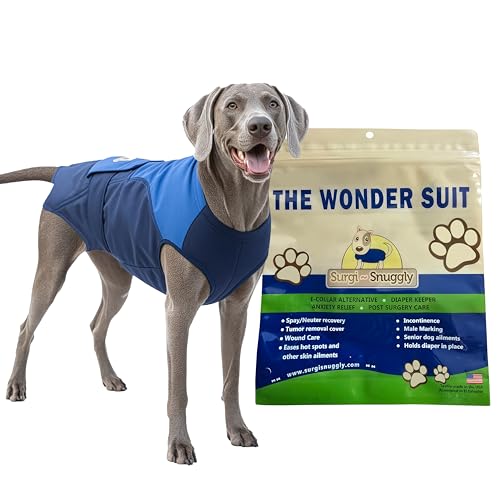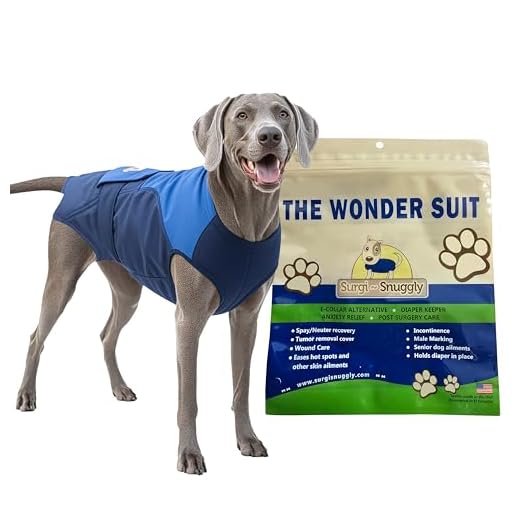




After the operation, the area where the surgical procedure took place typically appears as a straight line, usually around 5 to 10 centimetres long, depending on the size of the animal. The edges of the cut may be slightly red or swollen initially, which is completely normal. Over the following days, this redness should diminish, and the swelling should decrease significantly.
It’s crucial to monitor the area for any signs of infection, such as excessive discharge, persistent swelling, or a foul odour. If any of these symptoms occur, it’s advisable to consult a veterinarian immediately. The stitches, if not absorbable, will be removed approximately 10 to 14 days post-operation. In some cases, a protective collar may be necessary to prevent licking or biting at the site, ensuring proper healing.
During the recovery phase, keeping the pup calm and limiting their activity will greatly aid in the healing process. A clean, quiet space is ideal for them to rest. Always follow your vet’s aftercare instructions to ensure a smooth recovery and to prevent complications.
Understanding the Appearance of a Neutering Surgery Site
After the procedure, it’s common for the area to show some swelling, redness, or bruising. These are normal responses as the body begins to heal.
Here’s what you can typically expect:
- Length: The cut is usually between 2 to 5 inches long, depending on the size of the animal and the technique used.
- Colour: Initially, the skin may appear pink or reddish. As healing progresses, this will fade to a more natural skin tone.
- Stitches: You might see stitches or surgical glue. If stitches are used, they are often of the absorbable type, which means they will dissolve over time.
- Drainage: A small amount of fluid may be present in the first few days post-operation. Excessive discharge or a foul smell can indicate an issue.
Keep an eye on the site for signs of infection, such as:
- Increased swelling or redness
- Persistent bleeding
- Severe pain or discomfort
- Fever
If any of these symptoms occur, consult a veterinarian immediately. Regular checks and gentle cleaning as per vet instructions can aid healing and prevent complications.
Ensure your furry friend has a calm environment to recover. Limit physical activity to avoid strain on the healing tissue. Following these guidelines will help ensure a smooth recovery.
Appearance of the Incision Immediately After Surgery
After the procedure, the area will display a clean, straight line, typically 5 to 10 centimeters long. The skin edges should be well approximated, with minimal swelling present. It’s normal for the site to have a pink or slightly red hue, indicating fresh healing. You may also notice some clear fluid or slight blood in the first 24 hours, which is expected.
Pay attention to the following characteristics:
| Feature | Appearance |
|---|---|
| Colour | Pink to light red |
| Swelling | Minimal to moderate |
| Fluid | Clear or slightly bloody discharge |
| Stitches | Visible or covered with adhesive |
| Scabbing | Usually none at this stage |
Keep an eye on the site for any signs of issues, such as excessive redness, swelling, or discharge that appears yellow or green, which may indicate an infection. If you notice any of these symptoms, contact your veterinarian promptly for advice. Regular monitoring is key to ensuring a smooth recovery process.
Healing Process Overview
During recovery after surgery, you can expect some swelling and redness around the site. This is normal for the initial few days. Keep an eye on the area; any excessive swelling or discharge should prompt a visit to the vet.
Activity Restrictions
Limit physical activity for at least two weeks. No running, jumping, or swimming. Short, controlled walks are best. This helps prevent strain on the stitched area and promotes efficient healing.
Monitoring and Care
Check the site daily for signs of infection, such as increased warmth or unusual odour. Clean the area gently with a damp cloth if necessary, avoiding any harsh chemicals. If your pet is licking the area excessively, consider an Elizabethan collar to prevent irritation.
Signs of Infection Around the Incision Site
Monitor the area closely for unusual symptoms. Redness that spreads beyond the edges of the cut can indicate a possible infection. Swelling or a warm sensation around the site should not be overlooked. If there’s any discharge, especially if it’s yellow or green, this is a strong signal to consult a veterinarian.
Pay attention to your pet’s behaviour as well. Lethargy or reluctance to engage in normal activities may suggest discomfort or an underlying issue. If your furry friend seems to be in pain when you touch the area, this could also be a sign of infection. Additionally, a fever can be a clear indicator that something is amiss.
Ensure you keep the surgical site clean and dry. Avoid allowing your pet to lick or chew at the area, as this can introduce bacteria. If you observe any of these signs, it’s crucial to contact your vet immediately for guidance.
For pet owners, it’s also wise to be aware of other health concerns, such as unusual odours. For instance, if you notice your companion has an unusual smell, you might want to explore why does my dog smell like fish food, as it can sometimes relate to health issues that need addressing.
Comparing Incision Types: Traditional vs. Laparoscopic
For pet owners contemplating surgical procedures, understanding the differences between traditional and laparoscopic techniques is crucial. The traditional approach involves a larger incision, typically ranging from 5 to 10 cm, which allows for direct access to the abdominal cavity. This method can lead to more noticeable scarring, and the recovery period may be longer due to increased tissue trauma.
Traditional Technique
The conventional method provides a clear view of the internal organs, which can be beneficial in complex cases. However, the larger wound often results in more postoperative discomfort and a greater chance of complications such as infections or dehiscence. It’s vital to monitor the healing process closely, as larger incisions may require more careful management to ensure proper recovery.
Laparoscopic Technique
Conversely, the laparoscopic technique uses smaller incisions, usually around 1 to 2 cm. This minimally invasive approach employs a camera and specialised instruments, reducing tissue damage and leading to quicker recovery times. The smaller size of the openings often results in less pain and minimal scarring, which is a significant advantage for both the animal and the owner.
While both methods have their pros and cons, the choice often depends on the specific circumstances of the procedure and the veterinarian’s expertise. Always consult with a veterinary professional to determine the best option for your pet’s health and well-being.
How to Properly Care for the Incision at Home
Keep the area clean and dry. Use a mild antiseptic solution recommended by your vet to gently clean the site. Avoid using alcohol or hydrogen peroxide, as they can irritate the skin. A soft cloth or sterile gauze works well for this purpose.
Monitor for Changes
Check the site daily for any signs of redness, swelling, or discharge. A small amount of clear fluid may be normal, but anything more than that warrants a call to the vet. If you notice an unusual odour, it’s essential to seek professional advice promptly.
Prevent Licking or Scratching
Use an Elizabethan collar or a recovery suit to prevent your pet from disturbing the area. I learned this the hard way; my pup managed to get a few licks in before I could stop him, which led to a minor infection. Keeping the area protected is key for proper healing.
Limit physical activity for at least 10-14 days after the procedure. Short, leashed walks are fine, but no running or jumping. This helps avoid stress on the stitches and promotes better recovery. It’s a good time to engage in quiet play or training sessions that don’t involve too much movement.
If your vet prescribed pain relief or antibiotics, administer them as instructed. Be consistent with the medication schedule to ensure optimal recovery. I kept a chart to track when my dog needed her meds, which made it easier to remember.
When to Consult a Veterinarian About the Incision
If you notice any unusual changes or concerns regarding the surgical site, reach out to your vet without hesitation. Here are specific indicators that warrant a visit:
Signs of Complications
- Increased swelling or redness around the area.
- Persistent or worsening pain that doesn’t improve with time.
- Discharge that is yellow, green, or has a foul odour.
- Separation of the sutures or visible tissue.
- Fever or lethargy that suggests your pet is not recovering well.
Follow-Up Appointments
- Keep scheduled follow-ups to ensure proper healing.
- Ask about any concerns during these visits to clarify what’s normal.
Each pup heals differently, so monitoring their recovery closely is key. If something feels off, trust your instincts and consult your veterinarian. It’s better to be safe and ensure your furry friend is on the mend.







